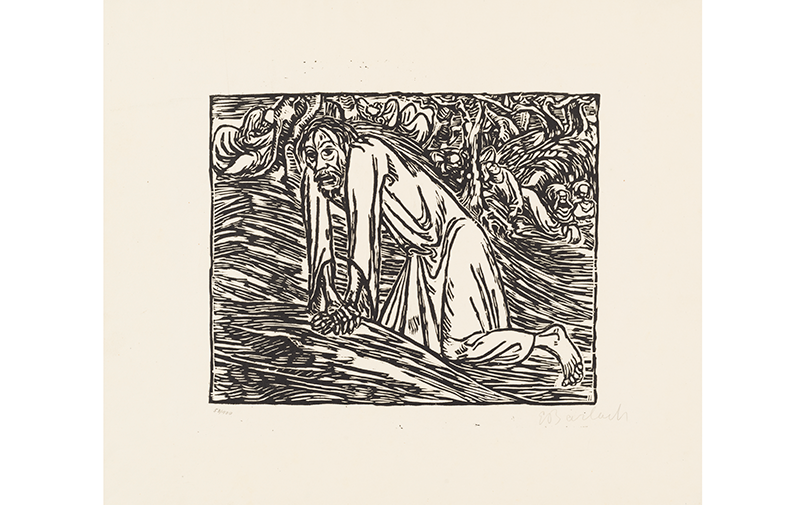- Events & Programs Home
- Calendar
- Accessibility
- Adults
-
Families & Teens
- Families & Teens Home
- 10x10 Teen Art Expo
- Art on the Rise
- Art Together: Art Making for Families with Children Ages 3–5
- Babies Sing with May Festival Minis
- Boy Scouts / Girl Scouts
- CAM Kids Day
- Family Storytime and Gallery Walk
- Family Studio: Art Making for Families with Children Ages 6–12
- Games in the Galleries
- Members-Only Baby Tours
- Public Baby Tours
- REC Reads
- Rosenthal Education Center (REC)
- Saturday Morning Art Class
- See Play Learn Kits
- Summer Camp
- Teen Fest: Zine and Comic Exchange
- RECreate
- Teachers
- Community Outreach
- Fundraisers
- Plan Your Own Event

- Events & Programs Home
- Calendar
- Accessibility
- Adults
-
Families & Teens
- Families & Teens Home
- 10x10 Teen Art Expo
- Art on the Rise
- Art Together: Art Making for Families with Children Ages 3–5
- Babies Sing with May Festival Minis
- Boy Scouts / Girl Scouts
- CAM Kids Day
- Family Storytime and Gallery Walk
- Family Studio: Art Making for Families with Children Ages 6–12
- Games in the Galleries
- Members-Only Baby Tours
- Public Baby Tours
- REC Reads
- Rosenthal Education Center (REC)
- Saturday Morning Art Class
- See Play Learn Kits
- Summer Camp
- Teen Fest: Zine and Comic Exchange
- RECreate
- Teachers
- Community Outreach
- Fundraisers
- Plan Your Own Event
Christ at Gethsemane
Christ at Gethsemane
- Home
- Plan Your Visit
- Art
-
Events & Programs
- Events & Programs Home
- Calendar
- Accessibility
- Adults
-
Families & Teens
- Families & Teens Home
- 10x10 Teen Art Expo
- Art on the Rise
- Art Together: Art Making for Families with Children Ages 3–5
- Babies Sing with May Festival Minis
- Boy Scouts / Girl Scouts
- CAM Kids Day
- Family Storytime and Gallery Walk
- Family Studio: Art Making for Families with Children Ages 6–12
- Games in the Galleries
- Members-Only Baby Tours
- Public Baby Tours
- REC Reads
- Rosenthal Education Center (REC)
- Saturday Morning Art Class
- See Play Learn Kits
- Summer Camp
- Teen Fest: Zine and Comic Exchange
- RECreate
- Teachers
- Community Outreach
- Fundraisers
- Plan Your Own Event
- Give & Join
- About
- Tickets
- Calendar
- Exhibitions
- Collections
- Blog
- Shop

Ernst Barlach (Germany, 1870–1938), Christ at Gethsemane, 1919, woodcut, Cincinnati Art Museum, Gift of Mr. and Mrs. Walter I. Farmer, 1952.327.
Audio Description
This woodcut, titled Christ at Gethsemane, was made in 1919 by German artist Ernst Barlach, who lived from 1870 to 1938. It was given to the Cincinnati Art Museum by Mr. and Mrs. Walter I. Farmer. Its accession number is 1952.327.
The figure of Jesus Christ fills this print, which is ten inches wide. Barlach used the thick lines carved into the woodblock to create a dramatic composition that illustrates Jesus’s agony in the Garden of Gethsemane as he considers his fate and prays. He is shown as a gaunt, lanky man with unkempt hair and beard wearing a robe that exposes his bare left foot and thin forearms. Christ kneels on the ground while leaning his weight on his hands, which are braced on a raised section of the ground. This figure is placed in a barren landscape, composed of diagonal lines that flow left to right to create the rolling contours of the ground. In the background the sleeping apostles huddle and lean against the trunks of dead trees.
Label Copy
This woodcut, titled Christ at Gethsemane, was made in 1919 by German artist Ernst Barlach, who lived from 1870 to 1938. It was given to the Cincinnati Art Museum by Mr. and Mrs. Walter I. Farmer. Its accession number is 1952.327.
Ernst Barlach was a renowned sculptor and printmaker in the years before World War I. After he experienced the horrors of war, Barlach’s works became more haunting in tone. In this woodcut, Barlach adapted the traditional Christian subject of Jesus agonizing over his impending betrayal and sacrifice. He emphasized Christ’s inner torment, while the twisted landscape of the garden and the bodies of the sleeping apostles evoke a war-torn battlefield.
Soon after the Nazis took power in 1933, Barlach’s work came under attack. The Gestapo (secret police) confiscated a volume of his drawings, and in 1937 his works were seized from museums. Across Germany, many of his public sculptures were destroyed. Facing a Nazi ban on his art, Barlach wrote, “No exhibitions of my works are possible. In Spain this is called garroting, asphyxiation. What can one say?”
Back to Art & Injustice Under Nazi Rule Back to the Audio Exhibition
Cincinnati, OH 45202
Toll Free: 1 (877) 472-4226
Museum Hours
Museum Shop
Terrace Café
Library
Cincinnati Art Museum is supported by the tens of thousands of people who give generously to the annual ArtsWave Campaign, the region's primary source for arts funding.

Free general admission to the Cincinnati Art Museum is made possible by a gift from the Rosenthal Family Foundation. Exhibition pricing may vary. Parking at the Cincinnati Art Museum is free.
Generous support for our extended Thursday hours is provided by Art Bridges Foundation’s Access for All program.

General operating support provided by:



